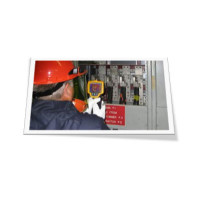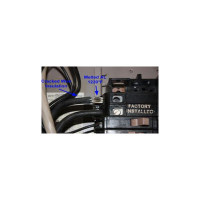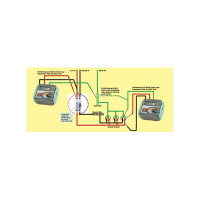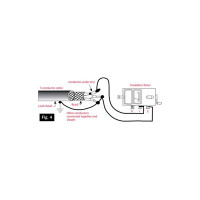THERMAL SCANNING
- Abnormal heating associated with high resistance or excessive current flow is the main cause of many problems in electrical systems.
- Infrared thermography allows us to see these invisible thermal signatures of impending damage before the damage occurs.
- When current flows through an electric circuit, part of the electrical energy is converted into heat energy. This is normal. But, if there is an abnormally high resistance in the circuit or abnormally high current flow, abnormally high heat is generated which is wasteful, potentially damaging and not normal.
OBJECTIVE
- Preventive Measures To Improve Reliability.
EARTH LOOP IMPEDANCE TEST
- Earth fault loop impedance is the path followed by fault current when a low impedance fault occurs between the phase conductor and earth, i.e. “earth fault loop”.
- Fault current is driven round the loop by the supply voltage. The higher the impedance, the lower the fault current will be and the longer it will take for the circuit protection to operate
OBJECTIVE
- To understand the required ELI of network to make sure the protection operates fast enough.
PRIMARY AND SECONDARY INJECTION TEST
Primary and secondary current injection tests are normally conducted to check the operation of breaker and their protective relays/devices.
The protective devices installed vary from circuit to circuit depending on the protection needs and philosophy but typical relays/devices include overload, over current, reverse power, earth fault, differential protection, etc., etc.
Primary injection testing normally involves injecting the actual current required to operate a protective device power through the circuit breaker.
CABLE INSULATION TEST
Over the years, electrical systems are exposed to environmental factors such as dirt, grease, temperature, stress, and vibration. These conditions can lead to insulation failure, resulting in loss of production or even fires. Periodic maintenance tests can provide valuable information about the state of deterioration and will help in predicting possible failure of the system. Correcting problems will result not only in a trouble-free system, but will also extend the operating life for a variety of equipment.
OBJECTIVE
- To insure public and personal safety.
By performing a high dc voltage test between de-energized current- carrying (hot), grounded, and grounding conductors, you can eliminate the possibility of having a life- threatening short circuit or short to ground.
- Customer satisfaction, and protect against fire or shock.
- Insulation testing is to protect and prolong the life of electrical systems and motors.
LUX LEVEL MEASUREMENTS
Good lighting plays an important role in safeguarding health at work by enabling employees to perform their work comfortably and efficiently. It also allows employees to read clearly labels and safety instructions (such as those affixed to chemical containers) to ensure compliance with safety measures for the prevention of hazards. Accordingly, there should be an appropriate level of the light falling on the surface on which employees are working.
Excessive contrast, strong glare and light flickering in their fields of vision are also inappropriate.
Illuminance is measured by a lux meter, which is a handy instrument with a sensor .The measured illuminance is directly displayed in lux (lx)
OBJECTIVE
- Seeing is the primary purpose of light which facilitate performance of visual tasks and provide safe working environment.





